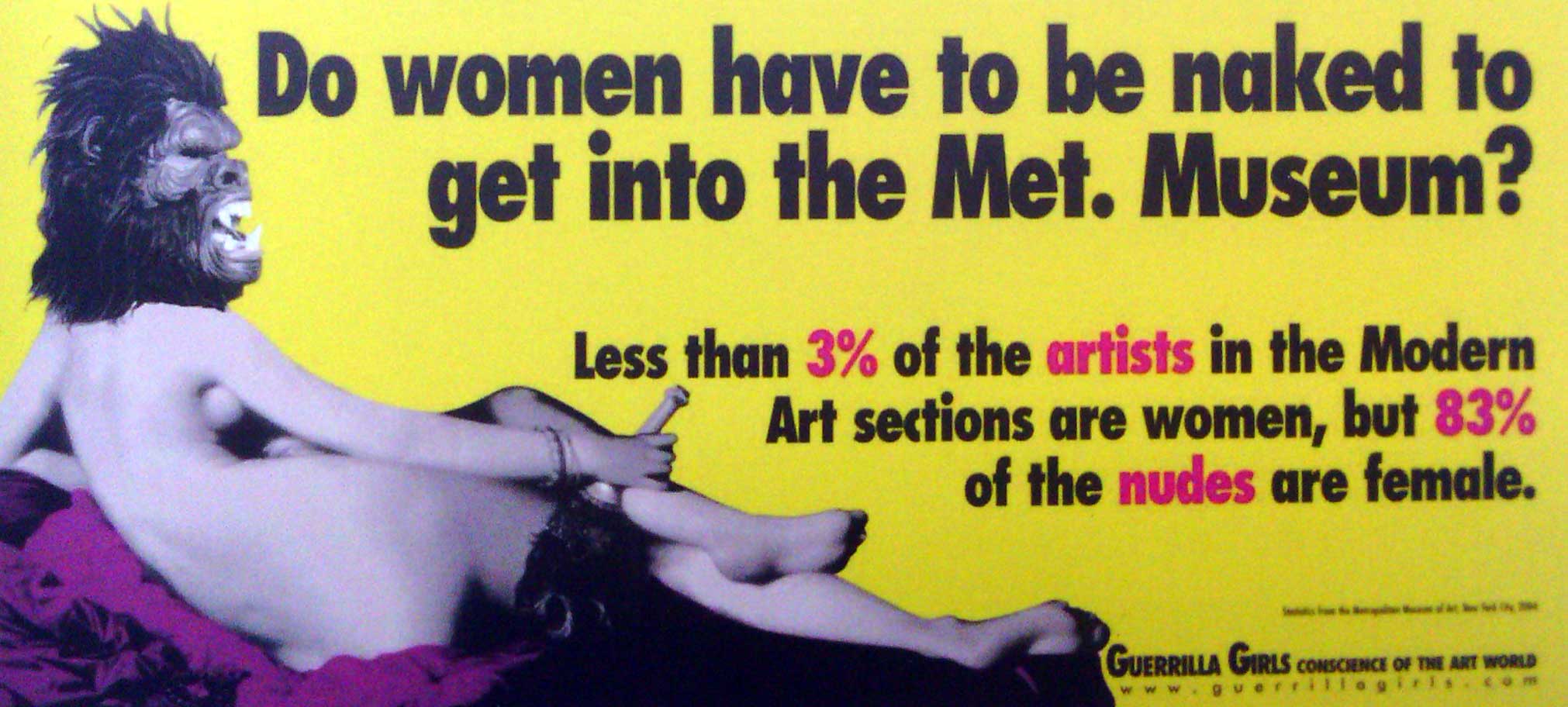Article from Chris Crombé
Women and art
Throughout the ages Women were barely recognized as artists. It was partly thanks to the research of the first (1860) and the second (1960) emancipation wave, that their names came alive. In the eighties of last century a lot of articles and books dedicated to the work of female artists were published. Despite this, women remained the underdog of the history of art. We therefore speak of HIStory.
Art history as a scientific discipline has arisen in the 19th century in Germany and spread all over the world. Despite the globalization the present-day art history remains focused on Western art made by men. This has largely to do with the privileged position of the classics as a putative cradle of Western civilization. The 19th century considered the Greek and the Roman civilizations as starting point of Western history.
The classic Greek philosophers explained the natural differences between men and women in terms of hierarchy and inequality which has led to the opinion that women (inspiration, intuition, nature) are inferior to men (mind, thinking, culture). This view became decisive for the theoretical and political thought of the West. A view that gave no room for women. The consequence is that most archaeologists and scientists make reconstructions of the past starting from a male rational thinking point of view. A female or even a neutral opinion is often rejected.

A linear and hierarchical point of view ensures success stories such as Michelangelo, Caravaggio, Rodin, Picasso etc. Female equivalents are not mentioned.
As long as we only get the traditional canon of art history, this history remains one of heroes and victories, one of wars and raids. Also the myth of primal patriarchy maintains. But if one dismantles this myth it becomes interesting to discover that behind the veil of patriarchy lays egalitarian cultures. Cultures that existed all over the world and produced eminent art forms.
From 3000 BC the male point of view became dominant especially in Europe and the Middle East. The script has given an additional contribution to the spread of the male monotheistic thinking. Our history (the time of the written sources) is indeed HIS story. This male point of view is maintained by most art dealers, courses and museums. A world dominated by a small elite of male western “connoisseurs”
Criticism could not be omitted
In the 70th of last century a neo-Marxist approach arise. A New Art History that places the social context of art history at the center. This suggests that the artist and his art is a product of the society in which he lives. Therefore an artwork can never be value-free. And history of Art is never objective and autonomous. At the same time, during the second emancipation wave, the feminist Art History arises. In 1971 the American art historian; Linda Nochlin, asks “Why have there been no great women artists?” She didn’t agree with the standard answer “There are no great women artists, because women are incapable of greatness.” Nochlin noted that no female equivalents for Michelangelo, Rembrandt or Picasso were listed in the canon of Art History. According to Nochlin this had to do with the centuries of exclusion of women from the arts education and the prevailing image about power relationships in art. She wondered: “What if Picasso were born a girl? Would Senior Ruiz have paid as much attention to a little Pabilata? Would he have stimulated her with the same ambition for achievement?” We know the answer: NO!
In 1971 Nochlin’s article was revolutionary, but when in 1985 not much changed, a group of masked women stepped outside: The Guerilla Girls. They were a bunch of anonymous women who took the names of dead women artists as pseudonyms and appeared in public wearing gorilla masks. They produced posters, stickers, books, printed projects and actions that exposed sexism and racism in politics, art, film and culture at large. They used humor to convey information, provoked discussions, and showed that feminism can be funny. They wore gorilla masks to focus on the issues rather than on their personalities.

We are we standing now? The traditional Art History is still dominant and the New Art History is not new anymore. As of today, there is still no mentioning of equality between men and female artists. The reason is that the existing perceptions and power relations are reflected and confirmed in art. The public hardly knows the work of female artists.
In following articles I will start with the earliest art form, from the Old Stone Age, and will then go on till the moment the art history was written and put the first female artists on the map. It’s important to put Her Story against His Story so that it becomes visible that art is from the source made by people: men and women!
Sources:
Haanappel, K.:(2012) “Herstory of Art”, 143p
Adovisio, J.M. (2008) “De onzichtbare vrouw. De rol van mannen en vrouwen in de prehistorie” Artemis&co, Amsterdam.
Pernoud, R. (1992) “De middeleeuwen een herwaardering” Ambo, Baarn
Pollock G (1988) “Vision and Difference: Feminism, femininity and the histories of Art” Routledge, London & New York
Nochlin, L. (1988): “Women, Art and Power and Other Essays”. Harper and Row Publ





